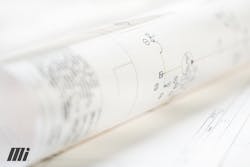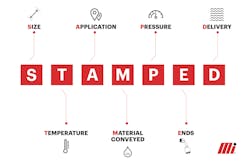Two-tier markets are nothing new to the world we live in. There are many ways to segregate and define two tiers of the same market. The following two examples are instances we see in our everyday lives.
First, companies can sell a different product to two tiers of the market with a differentiated value proposition. Let us consider the automobile industry. Toyota builds the Camry, one of the world’s highest volume and most popular vehicles. The well-appointed Lexus is also built by Toyota. These vehicles have very similar engines, transmissions and even appearances since they are built on the same chassis. Toyota has created a value proposition difference through features on the interior and exterior of the vehicles. The Lexus owners demand higher luxury and more features, which come with an increase in price. It is safe to say that both brands have a place in the market, and that both are successful.
Second, we will look at a retail example. Gap is a clothing company that owns both the Old Navy and Banana Republic brands. A pair of jeans from Banana Republic can cost as much as five times as a pair of jeans from Old Navy. There are perceived quality and performance distinctions for different customers and different applications. Again, both are desired and fill a need.
You may not be aware, but the two-tier market is also applicable to hoses and fittings. Let us begin by defining premium tier and standard tier for hose assemblies. Premium tier means the product exceeds the industry specifications in performance parameters such as pressure, temperature and abrasion resistance. It could also mean that the assemblies have additional features such as higher corrosion resistance, a longer warranty or meet additional criteria of DNV (Det Norske Veritas), the U.S. Coast Guard or the Mine Safety and Health Administration (MSHA). Standard tier products typically only meet the minimum requirements of the specification. They are fully tested and comply, but do not go above and beyond.
Applications
It is known that as performance and quality increase, so does the price. It is also fair to say that not all applications are created equal. Even within the same platform, vehicle, plant or system, the product requirements are likely to be different depending on the function of the hose assembly. You may have a high-impulse application or high abrasion situation that demands premium performance within a system. You may also have a scenario where the hose assembly is difficult to access or where failure is not an option. Again, premium performance is a must. There are other applications, however, that are non-impulse, involve minimal flexing and a standard tier, meaning that a spec product is very suitable.
There is a major equipment manufacturer that classifies its applications within a platform at two performance levels: Class A where premium performance is required, and Class B where standard performance is acceptable. For the same size and style of hose assembly, the testing and performance requirements are differentiated by class. This allows the supply chain team to make the right choice for performance and, ultimately, price.
Selection
Be wary of the low-cost competitor who is offering a standard tier product throughout the platform. While the competitive quote may look quite attractive, ensure that you understand the total value of the final solution. Parameters such as annual maintenance cost and equipment downtime must also be considered. Remember, a properly designed hose assembly solution with qualified fittings and crimp equipment, whether you are using premium or standard products, is a must. Please see the following excerpts found in both the Society of Automotive Engineers (SAE) and ISO specifications that warn about mixing and matching hose, fittings and assembly equipment from different manufacturers:
SAE: Hose from one manufacturer is usually not compatible with hose fittings supplied by another manufacturer. Similarly, assembly equipment from one manufacturer is usually not interchangeable with that of another manufacturer. It is the responsibility of the fabricator to consult the manufacturer's written instructions or the manufacturer directly for proper assembly equipment. Always follow the manufacturer's instructions for proper preparation and fabrication of hose assemblies.
ISO: Hose assemblies shall be manufactured only with those hose fittings whose correct functioning has been verified. The manufacturer's instructions shall be followed for the preparation and fabrication of hose assemblies.
Also, be careful not to try to match apples to apples with the assumption that the previous product was correct for the application. Educate yourself on the application and requirements to ensure you have a safe, reliable and value-driven solution. We recommend using the STAMPED process to aid in determining the correct hose assembly for your application:
Conclusion
Much like in your everyday life, two-tier markets also exist in the hose assembly world. Premium products exceed the specification, while standard products meet the specification. Premium and standard hose assemblies can properly coexist in the same system or on the same platform. Understand the details of your application to make the right value choice for your business. Standard tier does not have to mean low quality or the lowest price. Choose a safe and reliable solution of hose, fittings and assembly equipment from one qualified manufacturer. Engaging a qualified distributor partner can help you choose what is best for your application and not only recommend, but provide, both premium and standard tier products to meet all your needs.
A 30-year hose industry veteran, Joe Lark is Motion Industries' product manager for hose. Before his 10 years with Motion Industries, Joe spent 20 years with Monroe Rubber and Plastics Supply Company (now a unit of Motion Industries), with the last 10 as president/owner. He is a past president of National Association of Hose and Accessory Distribution (NAHAD) and was the committee lead for developing “Hose Assembly Guidelines” for NAHAD.
Chris Schadewald is the director — Americas, Fluid Conveyance Products for Eaton Corporation. He has spent 29 years in the hose industry with Aeroquip and Eaton. Chris has held responsibilities in engineering, program Management and product management. He is a future board member of NAHAD.



